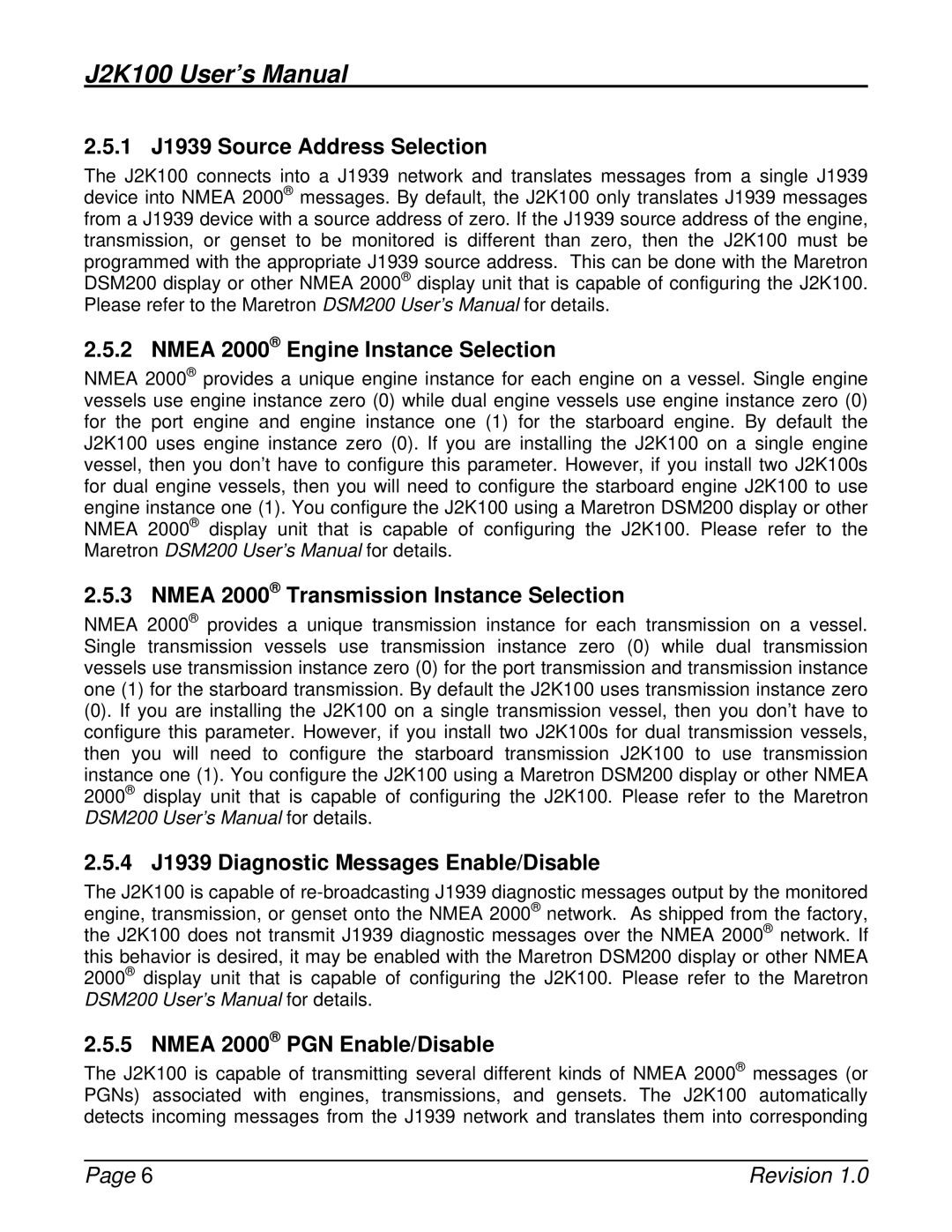J2K100 specifications
The Maretron J2K100 is a sophisticated data converter designed to enhance the connectivity and integration of marine electronics. As part of Maretron's comprehensive suite of products aimed at modernizing vessel monitoring and control systems, the J2K100 serves as a crucial link between NMEA 2000 networks and other systems.One of the standout features of the Maretron J2K100 is its ability to convert NMEA 2000 data into NMEA 0183 data. This compatibility is essential for boaters who want to connect legacy devices that only support the older NMEA 0183 protocol. By providing this conversion capability, the J2K100 ensures that users can seamlessly integrate new technologies with existing equipment, thereby enhancing the overall functionality of their marine electronics.
The J2K100 boasts advanced technology that allows for high-speed data transfer and reliable communication. Supporting up to 115,200 baud rate, the J2K100 can handle substantial amounts of data, making it suitable for applications that require fast and efficient communication between devices. This high-performance capability is particularly beneficial in dynamic environments like marine applications, where conditions can change rapidly.
Another important characteristic of the Maretron J2K100 is its user-friendly design. The device features status LEDs that provide real-time feedback regarding its operation, making it easier for users to monitor performance and troubleshoot any potential issues. The straightforward installation process further enhances the user experience, with clear instructions and the necessary connection points designed for simple setup.
The J2K100 is also designed with durability in mind, conforming to the tough standards required in marine environments. Its robust housing protects internal components from moisture, corrosion, and physical impacts, ensuring longevity and reliability, even in harsh conditions.
Furthermore, Maretron prioritizes compatibility, and the J2K100 is no exception. It supports various NMEA 2000 messages, which allows for integration with a wide range of marine electronic devices, from GPS units to autopilots and beyond. This versatility positions the J2K100 as an essential component for boaters looking to create a cohesive and efficient onboard network.
In sum, the Maretron J2K100 is a powerful tool for enhancing marine electronics networks. Its ability to convert data formats, coupled with high-speed capabilities, durability, and user-friendly features, makes it a valuable addition to any vessel looking to maximize its technological potential and ensure reliable maritime communication.
